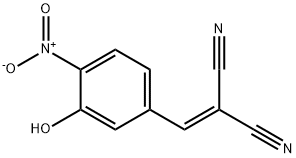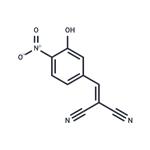ChEBI: 2-[(3-hydroxy-4-nitrophenyl)methylidene]propanedinitrile is a nitrophenol.
ag-126 is an erk1 and erk2 inhibitor.extracellular signal-regulated kinases (erks) are widely expressed intracellular signalling molecules that are involved in functions including the regulation of meiosis, mitosis, and postmitotic functions. many different stimuli, such as growth factors, cytokines, transforming agents, and carcinogens, can activate the erk pathway.
previous study found that r ag126 ould potently inhibit the pcw-evoked release and this effect was rather selective with respect to the stimulus. ag126 was found to be less potent in attenuating lps-triggered release. moreover, it was found that ag126 was able to prevent the pcw-inducible erk phosphorylation, which could relate to the ag126-mediated inhibition of pcw-evoked cytokine release [1].
ag126 was tested in a model of pcw-induced meningitis, in which rats underwent intracisternal injection of pcw with and without ag126 pretreatment. pcw injection led to a dramatic leukocyte influx into the csf. ag126 treatment could significantly attenuate such invasion, without changing the number of circulating leukocytes. in addition, ag126 treatment showed beneficial effects on other parameters, such as intracranial pressure. furthermore, ag126 had no adverse effect on several physiological parameters including mean arterial blood pressure, arterial pao2, paco2 as well as ph [1].
inhibits the phosphorylation of erk1 and erk2 at 25-50 μm
[1] hanisch, u. k.,prinz, m.,angstwurm, k., et al. the protein tyrosine kinase inhibitor ag126 prevents the massive microglial cytokine induction by pneumococcal cell walls. european journal of immunology 31, 2104-2115 (2001).


